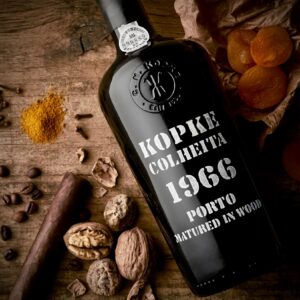
Casks of Colheita Port Maturing
Colheita is a single-vintage Tawny Port. Colheita is Portuguese for harvest, and in this case, harvest is synonymous with vintage. Colheita Ports are vintage-dated and include the bottling date/vintage typically expressed on the back label.
Some have called this lesser-known sub-category of Port the ultimate Tawny Port — we agree.
Colheita must be aged for a minimum of seven years in cask, but they can be aged for much longer. Some Colheitas from the nineteenth century still live in casks in Portugal. It’s important to remember that Vintage Port is aged in the bottle.
Like Vintage Port, Colheitas has declared vintages earning approval from the IVDP (Institute of Douro and Porto Wine).
While less Colheita is produced than Vintage Port, Colheitas are often less expensive than their Vintage Port siblings. In our view, Colheitas represent some of the greatest values in the Port world.
Colheita is meant to be consumed when bottled (although it will last for years in the bottle if stored well) as the producer has already done the aging in a cask. These are wines to be sourced with a targeted date to open and share, not to lay down in your cellar.

Colheita Port ready in Bottle
Colheitas do not require decanting, and once opened, they can be kept upright with the cork or stopper in place for several weeks. Colheitas offers the perfect balance of Port sweetness with a rich, nutty, and dried fruit character and many complex secondary flavors and aromas that are achieved with cask aging.
Port is typically served after the meal. Port is about 50% stronger than your typical white and red wine, so smaller servings are recommended. A three-ounce pour is standard — serve in a dessert wine glass, a white wine glass, and even a sparkling wine flute (stemless flutes are a great choice).
Colheitas can be served with a wide range of foods, as well as being enjoyed with nothing more than a glass. The mature, complex flavors with great natural acidity make Colheitas a perfect pairing with foie gras, a wide range of cheeses, fruit-based desserts, and chocolate.
